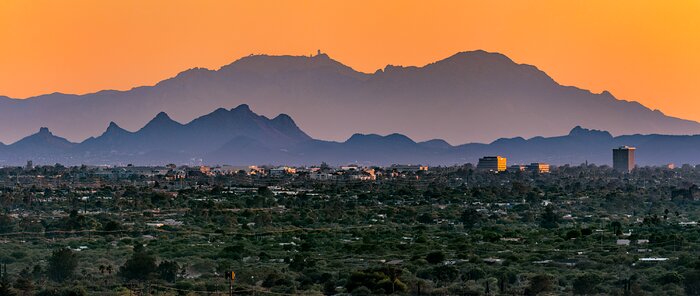A Global Epicenter for Astronomy
A pivotal hub for astronomy sits in the Sonoran Desert, surrounded by the mountains of southern Arizona. Southwest of Tucson, the Quinlan Mountains majestically rise to an altitude of 2100 meters (7000 feet) in the Schuk Toak District of the Tohono O’odham Nation. Atop the central peak in this image sits the U.S. National Science Foundation Kitt Peak National Observatory (KPNO), a Program of NSF NOIRLab and the largest collection of optical and radio telescopes in the northern hemisphere. Kitt Peak’s ideal vantage point, combined with the dark, dry environment of the desert, allows astronomers to make discoveries in many areas of astronomy including exoplanets, galaxies, and dark energy.
KPNO is just one of several observatories in the area, including the Mount Graham international Observatory and the Mount Lemmon Observatory, operated by the University of Arizona. In addition, Pima County, in which Tucson resides, is also a hub for space industry and space tourism. These institutions and facilities, combined with a vibrant community of astronomers and space innovators, make this city a hub for space research and discovery.
This photo was taken from the eastern side of Tucson on the Aqua Caliente Trail, one of many nature trails in the area, by Rob Sparks, a NOIRLab Audiovisual Ambassador.
Credit:KPNO/NOIRLab/NSF/AURA/R. Sparks (NSF NOIRLab)
About the Image
| Id: | iotw2502a |
| Type: | Photographic |
| Release date: | Jan. 8, 2025, noon |
| Size: | 15821 x 6693 px |
About the Object
| Name: | Kitt Peak National Observatory |
| Category: | Arizona |
